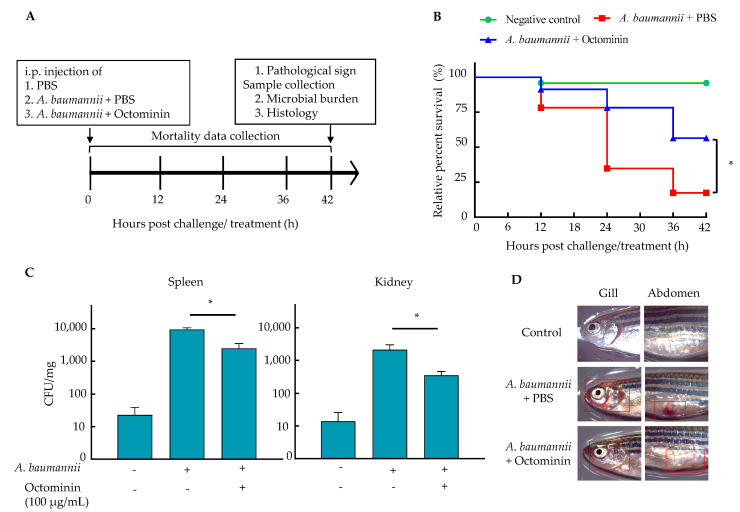Figure 8.
In vivo analysis of Octominin in A. baumannii-challenged adult zebrafish. (A) Schematic diagram of the experimental process. Adult zebrafish were challenged with 20 µL of A. baumannii culture (2.1 × 1011 CFU/mL) intraperitonially (i.p.) and simultaneously treated with 10 µL of Octominin (10 mg/mL) and PBS as the control. Uninfected fish were maintained as the negative control. The fish were maintained at 28 °C. (B) RPS after treatment over 42 h. The rate of surviving zebrafish in each group is depicted (n = 24/group). (C) The microbial count in the spleen and kidney with A. baumannii infection. The spleen and kidney were isolated after 42 hpi, homogenized in PBS, plated on trypticase soy agar (TSA), and incubated. The CFU were counted, and the average CFU/mg was derived. (D) Pathological clinical signs of A. baumannii infection in zebrafish. The abdomen and gill area of the zebrafish (marked in red frames) were observed under a light microscope to detect clinical signs of infection. * p < 0.05, compared to the PBS-treated negative control group. The error bars indicate the mean ± standard deviation (n = 3).

